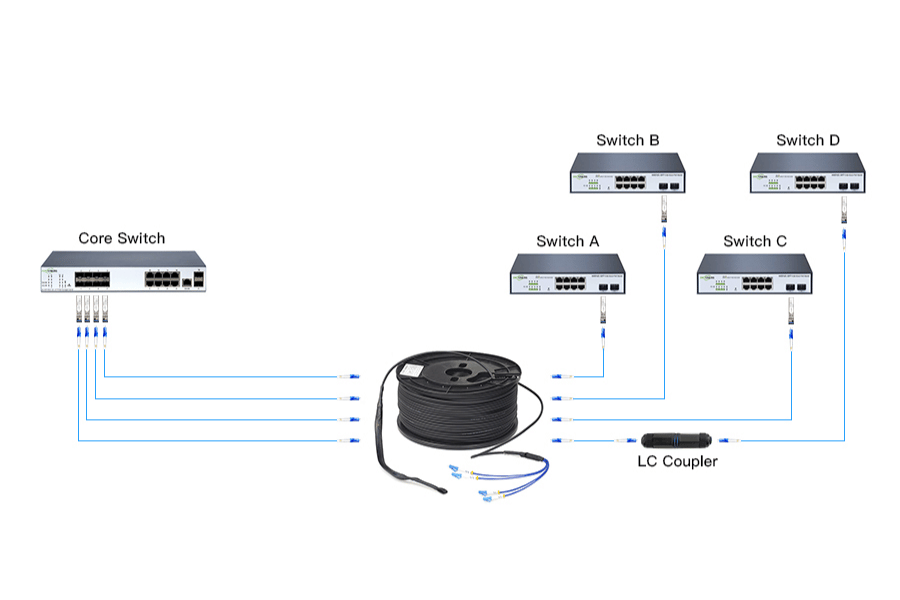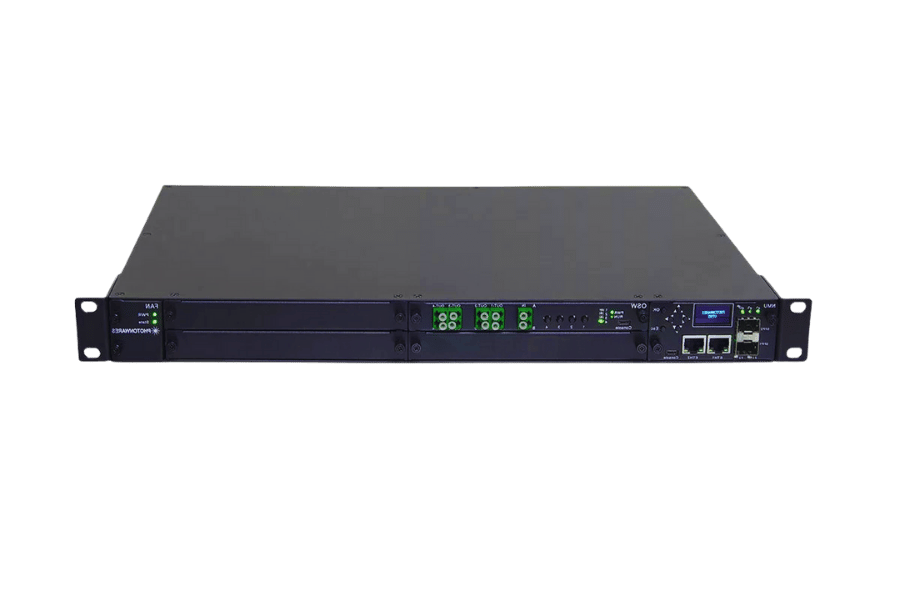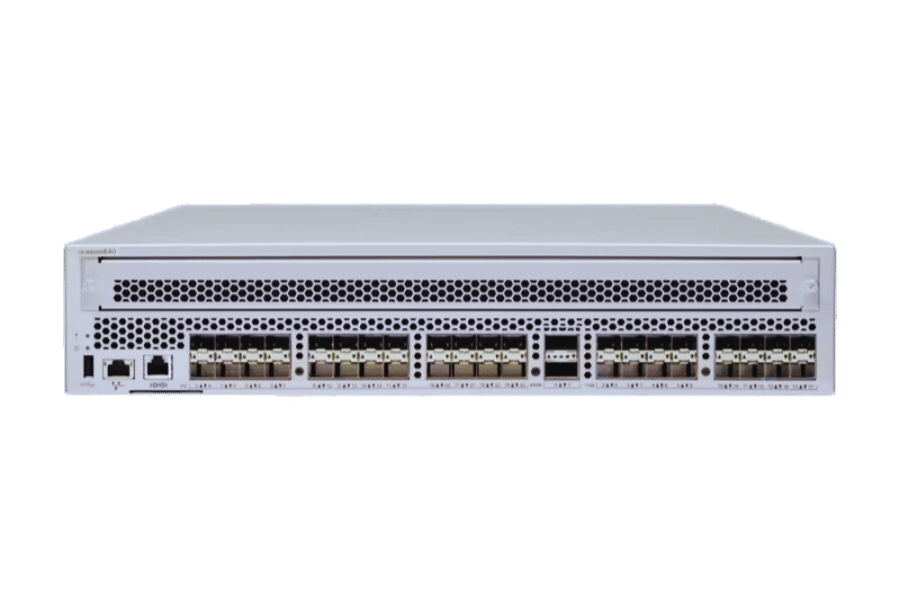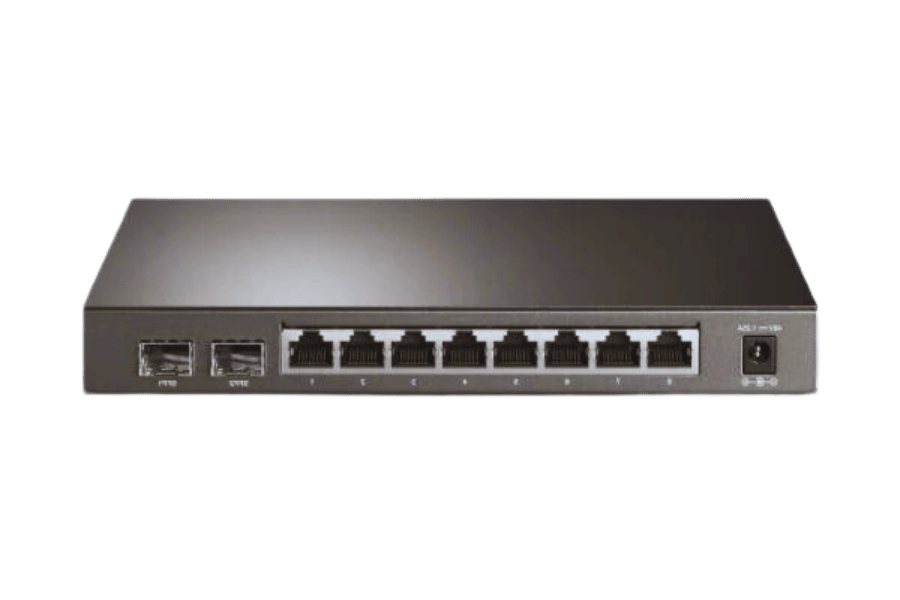In the current landscape of evidence-based medicine, functional fibers have become increasingly integrated as solid evidence in promoting health. Medical scientists have succeeded in a new stage of growing endophytic filamentous fungi within cotton fibers as new avenues to manufacture biocontrol agents. Others have accelerated research to develop functionalized yeast capable of highly efficient and sustainable biopolymer production. This guide attempts to address the various gaps and synthesizes the current level of knowledge on novel health-promoting functional fibers and the construction of next-generation biopolymers. Through this fusion, the readers will appreciate how fibers have evolved as core components in modern medicine and in addressing the world’s various problems.
Table of Contents
ToggleWhat is an optical switch, and how does it work?

Optical fiber networks use an optical switch to selectively switch optical signals among various channels without electrical signal mappings. It puts into use the structure mechanisms that change the path of light, e.g., mechanical systems movement, electro-optic or thermo-optical control to divert the signals. The use of optical switches facilitates the performance of network management functions by optimizing the utilization of telecommunications resources in a multi-faceted network architecture with the possibility of redistributing bandwidth instantaneously.
Understanding the basic operation of optical switches
Various switching techniques are used in optical switches to control the direction of light signals in the fiber optic network. For example, mechanical switching permits the pulling of fibers or mirrors to redirect the light path; in thermo-optic switching, changes in temperature in waveguides are used to change the refractive index and shift the signal path; and in electro-optical switching a light path is controlled by an electric field which affects the properties of the material being used. The mechanism selected will depend on the application’s requirements. For instance, speed, range of wavelengths, and the amount of loss through the network shall be minimal so that optical signals can be handled precisely to avoid any perturbation of the network operation’s parameters.
The role of optical fibers in switching technology
Optical fibers are essential in switching technology since they are the means through which light signals can travel. These fibers are constructed to enhance the efficiency of signal transmission over long distances, having minimal losses in the process. As it concerns optical switching, fibers are interconnected with other types of switches, e.g., 1×2 optical switches, to form flexible and scalable topologies. They can be applied due to the combination of their features, like low signal loss and large transfer capacity. Also, their feature of operating with several wavelengths at once enables them to perform wavelength-division multiplexing and increases optical networks’ overall performance and flexibility even more.
Exploring various types of optical switches
There is a precise categorization of optical switches in the sense that optical switches can be classified as mechanical switches, thermo-optic switches, or electro-optic switches, as each works on certain principles. Mechanical switches are physically moving parts such as mirrors or prism that direct optical signals. However, in thermo-optic switches, the refractive index of the waveguide is altered by temperature changes to change the signal path. Electric fields are used in electro-optic switches to change the optical characteristics of certain materials, which allows rapid change in signal flow. As illustrated in the best internet sources in this regard, the choice of a given switch depends on some parameters of the specific network, such as the required transmission speed, number of channels, and threshold levels of signal losses to meet the performance and scalability requirements of the target structure.
How do fiber optic switch systems integrate into network infrastructure?

Critical Components of Fiber Optic Switch Systems
Fiber optic systems include several complementary components that focus on a network infrastructure’s performance, expansion, and availability. The essential elements are the optical fibers – linear waveguides designed to transmit light signals, including fitting to the body – tapering its ends, and maximizing bandwidth to reduce signal loss. Optical switches are essential components, permitting the connection and reconnection of light signals into various network routes made possible by mechanical, thermo-optic, or electro-optic means. Other units like multiplexers and demultiplexers allow for Wavelength Division Multiplexing, enabling several signals to be carried through an interference-free single fiber. Transceivers that transfer electronic signals to optical signals and vice versa bridge the optical and digital networks to communicate effectively. These components make strong systems that efficiently control data streams over a complicated network.
Integration Challenges and Solutions
Integrating fiber optic switch systems into network infrastructure has disadvantages, such as compatibility, latency, and deployment. There are different ways to look at these problems, in my case achieving compatibility is very important, because this allows for integration with the existing network. To achieve this, there has to be a proper assessment of the existing infrastructure for easy integration during switch selection. Latency can also be a concern as the new switching mechanisms would cause a diversion in the existing optimized data flow. Solutions include using low latency switches to minimize the effects and ensure proper network configurations. The level of complexity in deployment is another challenge that requires a definitive implementation plan with all necessary steps taken in advance. The above solutions can overcome such deployment challenges and enhance network details of planning and control because it is on advice from the best online resources.
Advantages of high-speed fiber optic networks
High-speed fiber optic networks have many notable benefits, such as using 1×2 optical switches. To begin with, These unprecedented wire connections provide much higher data transmission than copper wires, thus making things like accessing cloud applications or transferring big amounts of data easier and faster. In addition, interactions within the fiber optics are less prone to electromagnetic disturbances, which makes communication channels far more reliable and stable even in high electronic noise zones. There are also reduced replacement and maintenance rates since these types of networks have a longer life than the other cable types. Also, fiber optics are highly scalable; therefore, current network needs can be easily upgraded with changes in technology and user needs. With all these benefits incorporated, a robust and future-proof networking infrastructure is illuminated.
What are the advantages of using MEMS optical switch technology?

Comparing MEMS with Traditional Switch Designs
Owing to MEMS switch fabrication and operational characteristics, MEMS (Micro-Electro-Mechanical Systems) optical switches possess a number of great benefits in comparison to standard switch designs. First of all, because of their miniaturized architecture, such devices are able to operate with faster switching times and latency. Given the application of such technology in high-speed networks, this is of great importance. In comparison, common switches have relatively higher time delays and power consumption because of their components’ physical contact and electromechanical structure. In addition, there are notable reductions in the area distribution, which renders space and power savings as great merits in high-density networks and data centers. Moreover, the compatibility and modular nature of the MEMS technology enable easy integration and application in different optical network configurations, an obvious advantage over conventional devices that have to be extensively reconfigured for similar applications and compatibility. Due to MEMS technology, networks can have enhanced performance efficiency, which aligns with global communications requirements, whereby the demand for greater reliability is constantly increasing.
Benefits of low-loss and high-reliability in MEMS switches
The advantages of low loss and high reliability in MEMS switches in optical networks are their effective and efficient characteristics. Besides, MEMS switches are designed for low insertion loss. Therefore, signal loss while switching is low, and the transmission quality remains high. Signal integrity is an important aspect that must be considered, mainly when the network is spread over a wide area or in cases where the intensity of the network is high. Another significant advantage is the MEMS switches’ high reliability due to their rugged construction, which does not easily cause mechanical failure like the conventional switches. Such reliable features provide regular network service and low maintenance expenses and downtimes, which are crucial in telecom and data center applications. Because of these low-loss and high-reliability characteristics, it becomes apparent that MEMS switches offer the best solution for high bandwidth requirements in high efficiency and stable next-generation optical networks.
Applications where MEMS technology excels
The MEMS technology can be applied in various fields, especially telecommunications, requiring high accuracy and dependability. MEMS switches are helpful for optical switching because their low power requirement and small size make them suitable for telecommunication racks in data centers. MEMS technologies are also increasingly used in sensor systems such as automotive pressure sensors and accelerometers for their strength and small volume, enabling their application in multifunctional vehicles. Due to their versatility and excellent reliability, the medical sector also utilizes MEMS devices in accurate diagnostic and implantable devices. Besides, the market of consumer products takes advantage of MEMS applied in smart devices such as gyroscopes and microphones, increasing the functionality of such devices. As a whole, MEMS technology can be used in many industry sectors as it resolves the challenges of efficacy, reliability, and flexibility.
How does a fiber optical switch system improve signal control?

Mechanisms of signal control in fiber switch systems
Signal management in fiber optical switch systems is enhanced through multiple mechanisms that ensure effective and accurate control of optical signals. More specifically, these systems employ MEMS-based switches that receive optical signals and redirect them through various optical fibers without the need to first be converted to electrical signals, which reduce losses and enhance speed. These switches utilize micro-mirrors with a tilt or rotation mechanism to accurately direct the light beams to the intended output channels. Furthermore, wavelength-selective interconnects are included in the systems whereby specific wavelengths can be controlled individually, thus economizing bandwidth. This allows the reconfiguration of network paths that would otherwise be static, improving optical networks’ flexibility and scalability. Optical fiber interconnections offer high signal fidelity and control in the load balancing of advanced telecommunications networks.
Impact on signal loss and quality
Switching systems based on fiber optics reduce signal loss because the design enables the control of optical signals without converting them first to electrical form. The direct optical management of signals reduces the problems of attenuation and reflection, which are usually associated with electrical-optical conversions. Additionally, the integration of MEMS-based technology allows for enhanced accuracy in the routing of the signals, thus maintaining the quality and integrity of transmission. The use of wavelength-selective components improves signal quality and prevents interference with other signals by controlling specific wavelengths and making the best use of bandwidth. Therefore, fiber optic switch systems are ideal for telecommunication networks in standard configurations, allowing for high-quality signal transmission.
Enhancing network performance through advanced switches
Advanced fiber optical switch systems boost the network’s performance by allowing reasonable control of traffic management and reconfiguration to improve data flow within the network. Such systems facilitate switching network paths in minimal time to allow higher data rates and lower latency. High-end switches further manage bandwidth by directing specific wavelengths, preventing bottlenecks that enhance network stability and scalability. The use of such systems in telecommunication networks supports increased efficiency and reliability of the network system, making it dynamic and capable of efficiently accommodating increasing operations and communication workloads.
What are the key considerations when choosing a fiber optic switch?

Evaluating cost versus performance
In the case of fiber optic switches, cost and performance comparisons should take into account the purchase price, the investment required for future deployments, and the overall costs incurred for operation in the future. Analytics in terms of upfront cost includes what is often termed as switch or initial investment, which should remain well within budgets without compromising on any infrastructure/integration requirements. Furthermore, this part of the analysis in addition to other components permits an evaluation of scalability so that a switch can have room for future expansion and increasing data volume, especially where extra costs will not be incurred on top standard configurations. The considerations of the performance of the system should also integrate the cost for the operation of the system, which encompasses operational energy needed and the costs related to system maintenance, with a view of the system’s economic performance over its designed life. Addressing these issues provides the information necessary for effective planning, thereby addressing the technical and economic metrics of the network infrastructure deployed.
Understanding the importance of configuration and design
Besides understanding the configuration and design issues of the fiber optic switches, the technical parameters of port density, switching capacity, and level of compatibility with the network are essential for the effective use of 1×2 optical systems. In addition, the current paradigm design ensures that the data is processed efficiently with low latency and high throughput, which are necessary for effective networking service. In designing the equipment, provision should be made for capacity enhancement in the future and expansion so that different characteristics can be accommodated and a variety of driver modules supported. In addition, the system management and automation capabilities should also be responsive to the requirements of the ever changing environment of the network in the course of ensuring security and reliability. When these requirements are met, it becomes possible for the network architects to have a network infrastructure that is scalable, efficient, and robust for current and anticipated changes in technologies.
Future-proofing your network with scalable solutions
It is essential to make sure that the technologies deployed today will quickly scale in the future. Future technology will undoubtedly reshape the current digital landscape. According to prominent digital sources, Cloud Infrastructures and virtualization technologies will rationalize active resources and create new growth opportunities. Implementing Software Defined Networks (SDN) and Network Functions Virtualization (NFV) can extend the restructuring capabilities of the network, eliminating the limitations and costs of its operation. Henceforth, such tools as advanced analytics and automation advanced networks for intelligent performance across various modules in real-time and actively manage the network. In this way, these approaches create an effective and efficient network that is ready for the future and can easily adjust to new technologies.
Reference Sources
Frequently Asked Questions (FAQs)

Q: What is an optical fiber switch system, and how does it work?
A: An optical fiber switch system establishes a path for communication signals such as voice and transfers them among switching circuits through fiber optic communication cables. This is accomplished by MEMS systems (Micro-Electro-Mechanical Systems) or any other optomechanical techniques that translate motion to redirect a light path. These switches are handy for highly demanding applications with very little signal loss.
Q: What are the available optical fiber switches and their classification?
A: Some common types are 1×2, 1×4, and 1×8 optical switches referring to the number of input and output ports. For instance, A single-pole double-switch (1×2) switch may ease interference when SSB, double pole, … and SSB slash two-angle configurations are alternated. These are also handled quite efficiently with dual 1×2 switches for much more elaborate scenarios. These products are available in various forms and can also modified to fit customers’ certain features.
Q: What is LightBend™ technology, and how does it help improve optical switching technology?
A: LightBend™ is a form of technology invented by technology companies such as Agiltron Inc. It employs special materials that can create bends along an optical path, thus improving the speed of the switch while maintaining other essential characteristics. With the incorporation of Lightbend, optomechanical switches now have new unique features that increase their effectiveness, such as switching speed, life span, and stability.
Q: How are MEMS fiber optical switches unique from other types?
A: Tiny mirrors or microstructures in MEMS (Micro-Electro-Mechanical Systems) fiber optical switches control the direction of light. The switches enable light switching at pretty fast speeds while minimizing power consumption. MEMS switches are often employed in telecommunications and test equipment, among other applications.
Q: What are the major applications of optical fiber switch systems?
A: Optical fiber switch systems are used in telecommunications, military, computer networking, and environmental monitoring, among other industries. They are critical in providing high-speed data transfer, network redundancy and redirection of optical signals in case of failover events. In addition to the above uses, routers equipped with optical switches for testing and measurement that incorporate the 1×2 optical configuration are appropriate for such tests.
Q: What are the specifications of an optical fiber switch that you need to take note of?
A: The most crucial factors to consider when selecting an optical fiber switch include the number of switching ports (for instance, 1×2, 1×4), switching speed, optical power loss, dependability, and the ability to withstand these conditions for a long period. Moreover, it is important to assess the particular needs of your task, including operating temperatures, size limitations, and the ability to integrate into already established structures.
Q: Explain latching optical switches. How are they different from non-latching optical switches?
A: Latching optical switches can remain in the same position even without power being supplied, whereas non latching optical switches can change positions only when there is a power source. In other words, latching switches are helpful in situations where power is limited or in cases where high consumption of energy for the switching mechanism is not permissible.
Q: In what ways do fiber optic switches enhance the performance of telecommunication networks?
A: Fiber optic switches present a myriad of advantages in telecommunication networks. Some include fast data communications, long-haul low signal strength, elimination of electric magnetic interference, and the capability to support multi-channels. They also allow adaptable network layouts, better service resilience, and optimal network resource utilization.
